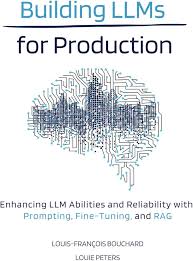Mastering RAGFlow: A Comprehensive Guide to Retrieval-Augmented Generation Systems for AI-Powered Applications
1. Introduction
RAGFlow (Retrieval-Augmented Generation) represents a paradigm shift in how we build intelligent, context-aware systems. By integrating external data retrieval with powerful language generation models, RAGFlow empowers organizations to develop accurate, scalable, and transparent AI solutions.
This white paper explores foundational concepts, advanced engineering practices, deployment strategies, and resources necessary to harness the full potential of RAGFlow. It draws from leading industry literature and showcases how KeenComputer.com and IAS-Research.com can support businesses on this transformative journey.
2. Why RAGFlow?
Traditional LLMs often hallucinate, generate outdated responses, or struggle with domain-specific knowledge. RAGFlow addresses this by:
- Integrating retrievers that query trusted data sources (e.g., vector DBs)
- Enhancing generation with real-time, relevant knowledge
- Improving transparency, traceability, and trustworthiness of outputs
- Reducing the need for costly model retraining or fine-tuning
3. Architecture Overview of RAGFlow
Typical RAGFlow pipeline components include:
- Query Encoder – Transforms user input into a dense vector.
- Retriever (e.g., FAISS, Weaviate) – Searches external knowledge bases.
- Document Reader / Ranker – Prioritizes relevant chunks.
- Generator (e.g., GPT, LLaMA) – Produces an answer augmented with retrieved content.
- Post-Processing Layer – Enhances output for summarization, citations, or formatting.
This modular architecture enables flexibility across industries—from healthcare to finance and customer support.
4. Foundational and Advanced Literature for RAGFlow Mastery
Core LLM & RAG Books
|
Book Title |
Key Learnings |
|---|---|
|
Building LLMs for Production |
Covers RAG, fine-tuning, prompt engineering, and deployment strategies with MLOps focus. Ideal for designing production-ready RAG systems. |
|
LLM Engineering Handbook |
Discusses data pipelines, inference optimization, and case studies like “LLM Twin”—a practical RAGFlow deployment use case. |
|
Hands-On Large Language Models |
Includes code samples for text classification, summarization, and multimodal RAG tasks. |
|
Build a Large Language Model (From Scratch) by Sebastian Raschka |
Demystifies LLM internals, enabling better adaptation of RAGFlow’s base components. Great for AI engineers. |
Specialized Books on RAG and Deployment
- Unlocking Data with Generative AI and RAG
Focuses on integrating internal enterprise data with LLMs via RAG—crucial for domain-specific implementations. - Generative AI on AWS
A guide to deploying scalable LLM solutions with SageMaker, Bedrock, and Lambda—essential for cloud-based RAGFlow.
Bonus Resources
- Designing Machine Learning Systems by Chip Huyen
Offers architecture design principles, latency optimization, and data-centric practices—ideal for structuring and scaling RAGFlow pipelines.
5. Hands-On RAGFlow: Tools and Guides
- RAGFlow Documentation – BecomingAHacker.org
Step-by-step guide for building and deploying RAGFlow applications with open-source components. - RAGFlow Developer Guide – Daily.dev
Practical implementation guide covering modularization, fine-tuning, and cloud integration.
6. Use Cases and Industry Applications
|
Sector |
RAGFlow Use Case |
|---|---|
|
eCommerce |
Context-aware chatbots, product Q&A assistants, and personalized shopping guides. |
|
Healthcare |
Clinical decision support systems that pull from approved research and patient records. |
|
Legal |
Retrieval-based legal research, compliance checks, and contract summarization. |
|
Finance |
Investment advisors, KYC documentation interpreters, and fraud detection assistants. |
|
Education |
Interactive tutors that align with curriculum and pull from academic databases. |
7. Deployment Models
- On-Premise – Ensures data privacy and compliance.
- Cloud-Native – Supports scalability and ease of integration (AWS, GCP, Azure).
- Hybrid – Balances sensitivity with compute flexibility.
Each model can benefit from frameworks like LangChain, LlamaIndex, or directly using RAGFlow as a base engine.
8. How KeenComputer.com and IAS-Research.com Can Help
KeenComputer.com
- Offers consulting, prototyping, and system integration for LLM and RAG applications.
- Provides managed infrastructure for RAGFlow deployment (on-prem/cloud).
- Custom development for eCommerce, education, and SME verticals.
IAS-Research.com
- Focuses on AI/ML research, training, and framework design.
- Helps build custom retriever-generator pipelines.
- Assists in fine-tuning models using domain-specific corpora.
Together, they offer a full-stack solution—from idea to implementation—ensuring RAGFlow is cost-effective, secure, and reliable.
9. Conclusion
RAGFlow empowers the next generation of AI applications by making language models smarter, more context-aware, and less prone to hallucinations. With the right combination of tools, books, and partners, businesses can accelerate their AI transformation journeys.
Would you like to add a visual diagram, a glossary of terms, or a step-by-step implementation guide in the next version?



